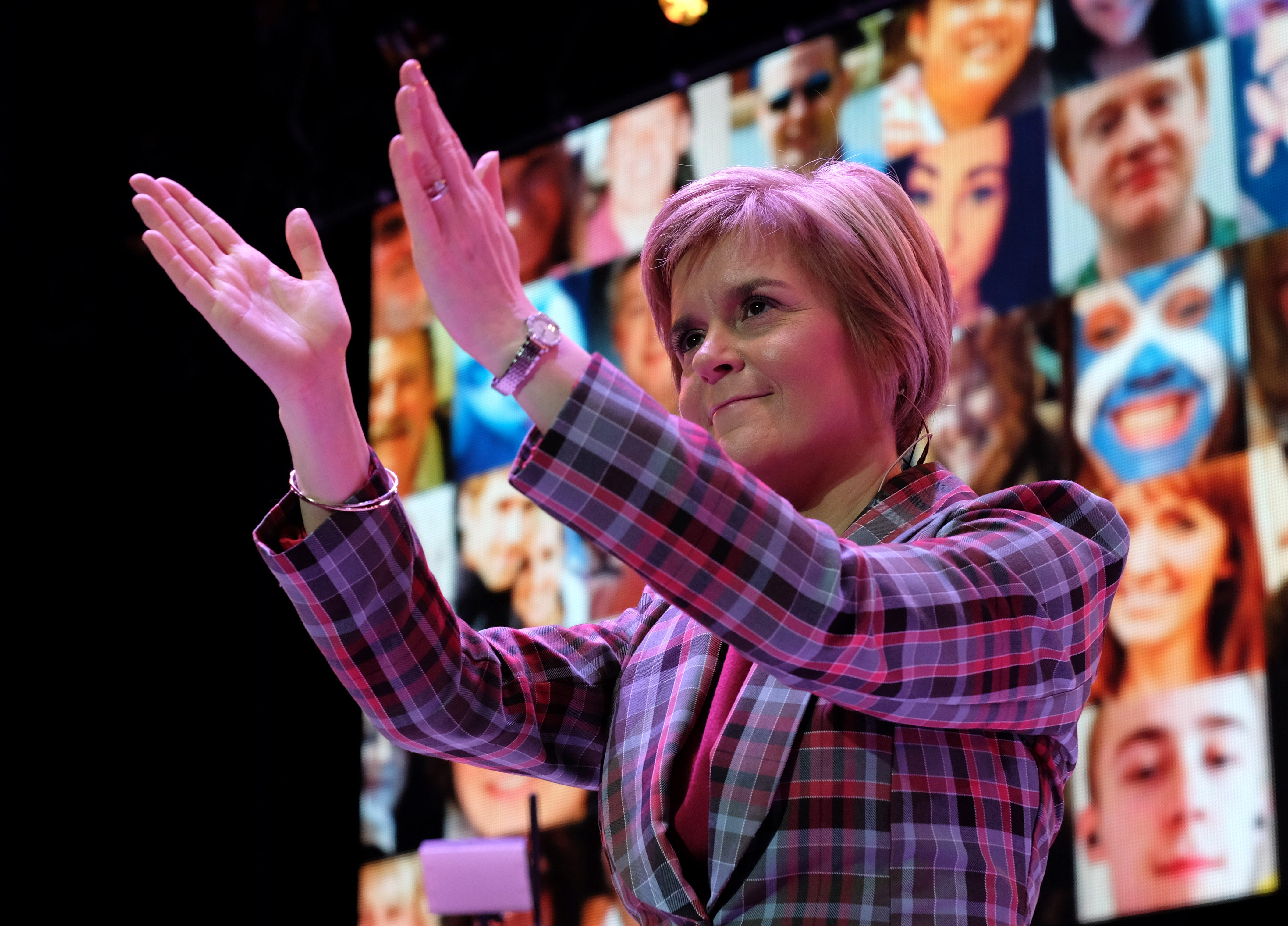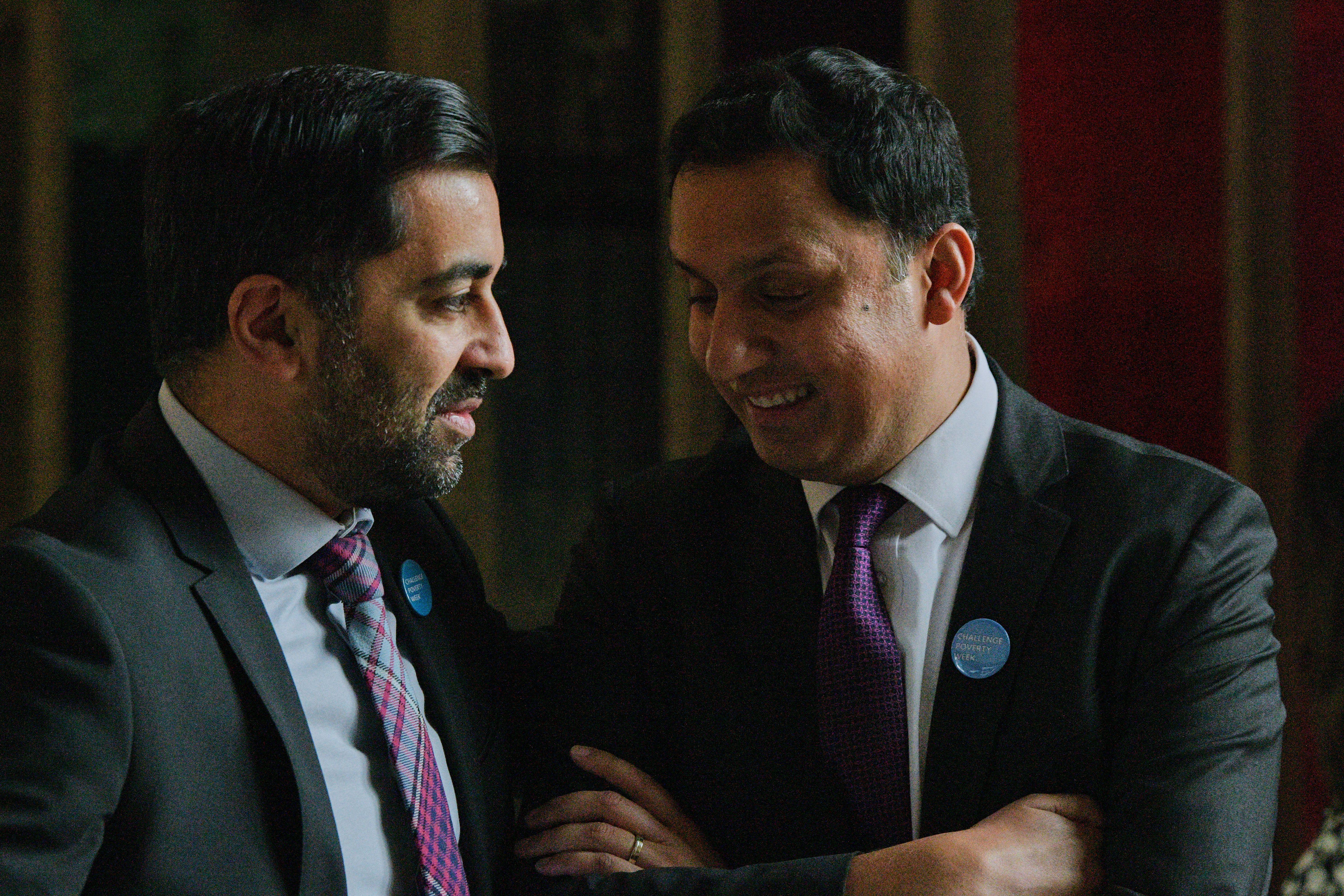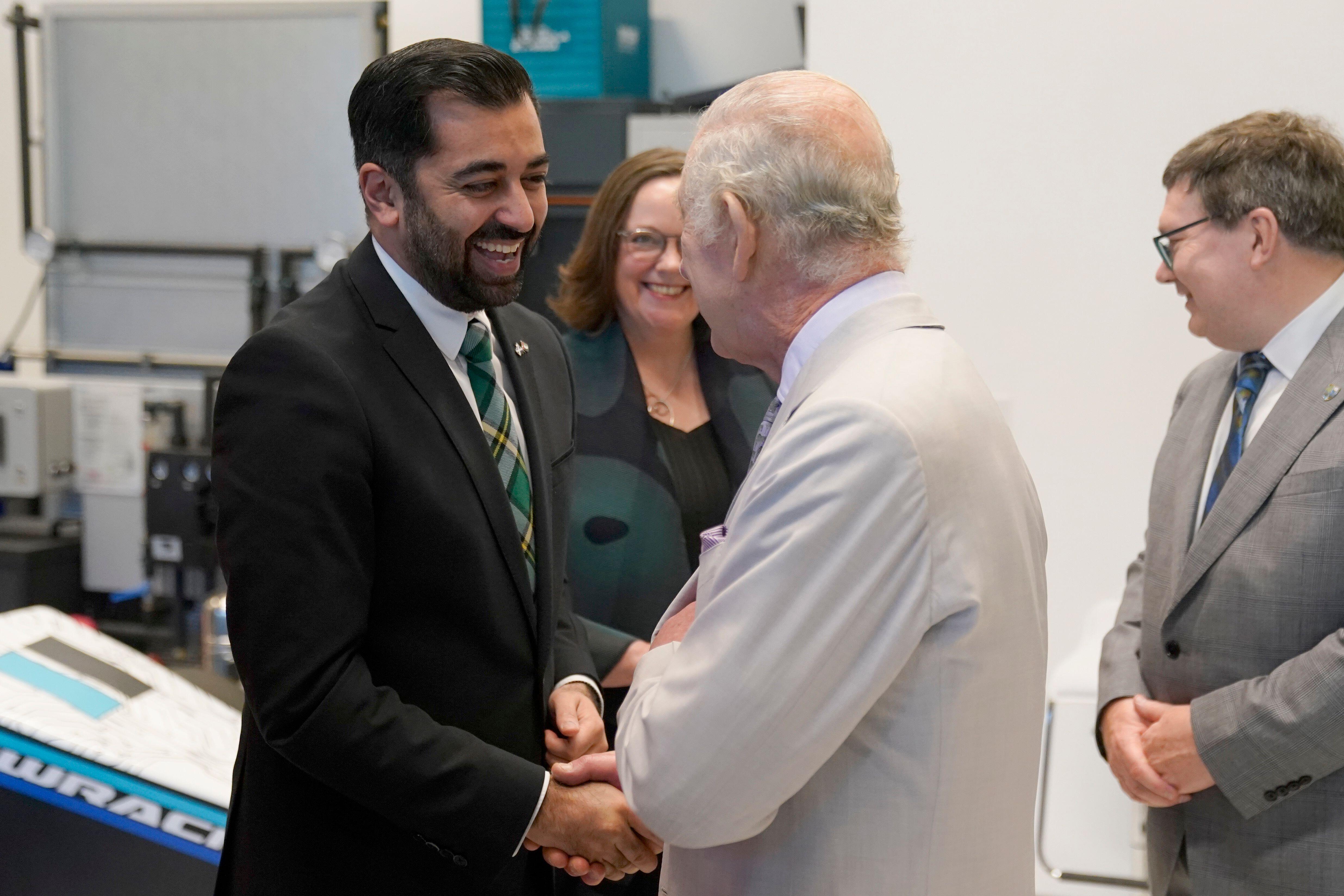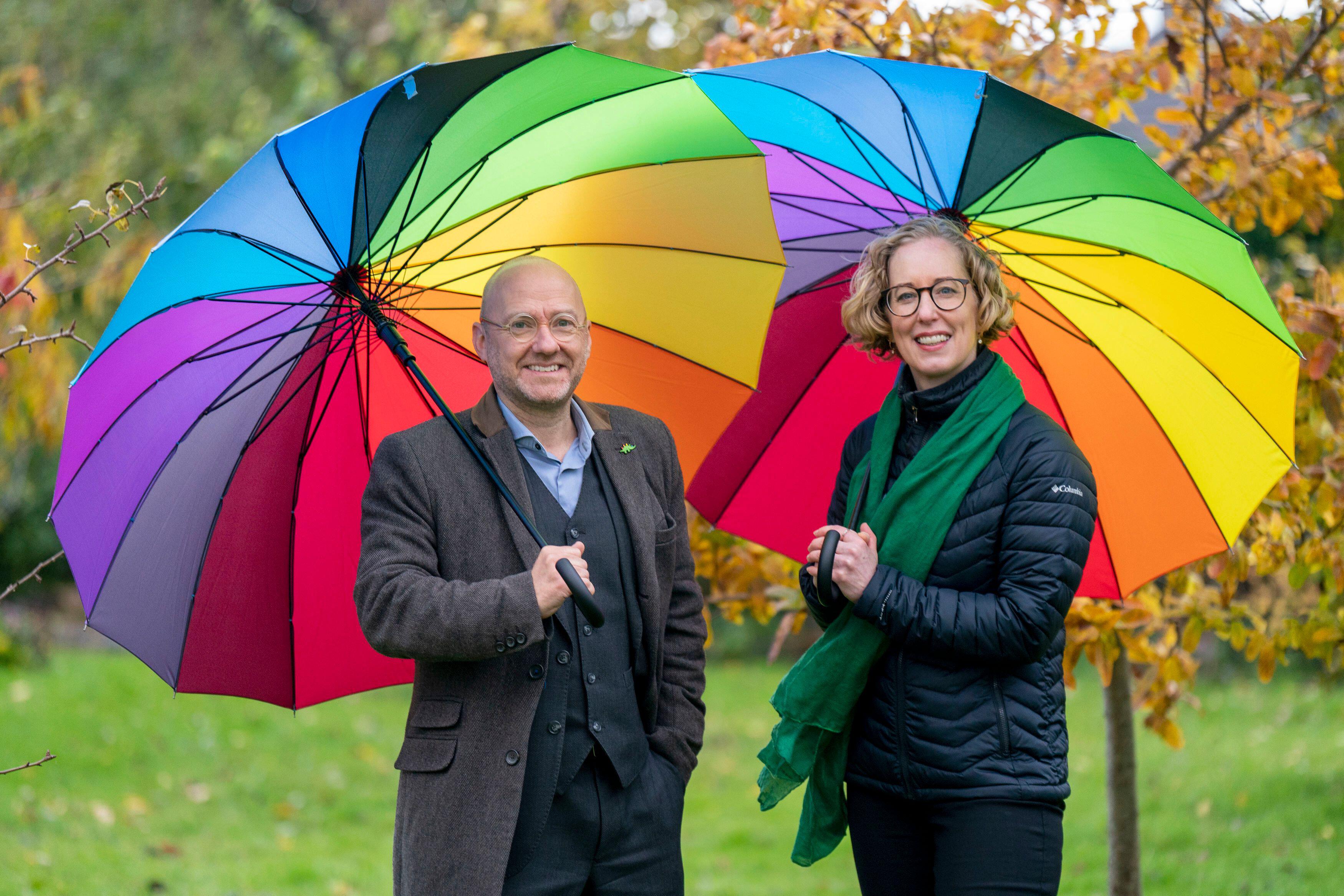Under the Spotlights: Is the show over for the SNP-Green Scottish Government?
The stage is set and the players are assembled for one of the parliamentary events of the year.
The lights haven’t quite dimmed yet, but Humza Yousaf’s Cabinet is waiting in the wings for its big entrance, and while it may be panto season, there is little cheer around this Scottish Budget.
Extra cabinet meetings were required to thrash out details, such is the difficulty now faced by ministers in balancing the £60bn Budget and delivering their promised council tax freeze against a projected public spending gap of £1bn before any changes are made. Shona Robison, the deputy first minister, said the terms of Chancellor Jeremy Hunt’s Autumn Statement present a “worst-case scenario” settlement for Scotland, thanks to his decision to reduce tax instead of increasing spending. Hunt said he’d give Holyrood an additional £545m in this financial year and the next, but Robison said Barnett formula equations meant the small rise in cash for the NHS in England would result in only £10.8m more for Scotland. And while there is undoubtedly pressure to make the numbers work, the government has several other fires to fight.
The SNP came to power in 2007 on a platform of trust and competency. But after 16 years in administration that record is now in question amid a clutch of less-than-favourable reviews on health and education.
NHS waiting lists remain high and both the BMA and the Royal College of Nursing say unfilled jobs in their thousands mean the health service lacks the staff it needs to deliver for patients. Last week’s Pisa report saw Scotland record its lowest ever results in the international comparison of educational attainment, prompting heckles from rival parties. Meanwhile, local government and trade unions are clamouring for action to “save Scotland’s public services” amid warnings that some councils could effectively become bankrupt due to growing cost pressures.
Nicola Sturgeon had political superpowers

Nicola Sturgeon addresses the Hydro arena in 2014 | Alamy
And of the 61 National Performance Framework indicators that are currently measurable, only 17 show improvement, with 13 showing deterioration and the other 31 revealing stagnation. The other 20 categories are not currently comparable due to changes in data collection, but it is clear that while there is improvement in economic growth and the sustainability of fish stocks, performance is down for child social and physical development, greenhouse gas emissions, workplace learning and quality of care experience – not the message the SNP-Green government would wish to send this Christmas.
And so, while the first minister would be excused for seeking a silent night so close to festive recess, much remains on his to-do list even after that Budget is delivered. Operation Branchform hangs over his party like a ghost of Christmas past, the government has lost a high-stakes court challenge against Westminster’s use of Section 35 powers over the Gender Recognition Reform Bill and the press won’t let go of the Michael Matheson iPad row, even after so many government statements suggesting the matter is settled. Then there’s that headline-grabbing dispute with SNP veteran Fergus Ewing to think about, long-delayed ferries to finish and a new legal case raised by Yousaf’s predecessor and former mentor, Alex Salmond, into the Sturgeon government’s handling of allegations against him, even after that Budget is delivered. And so it goes on.
The list is so long, and speculation about the forthcoming general election so strong, that it is perhaps a surprise to realise that we are only halfway through this government term. It may nominally by the season of goodwill to all men, but there will be no truce between the aisles with a public to win over. After a succession of polls which suggested Yousaf’s party could face serious challenge from an ascendant Labour, another has emerged which presents a different narrative.
Released at the turn of the month, the Scottish Political Monitor from Ipsos and STV News put the SNP 10 points ahead of Labour in general election voting intention and 12 points ahead for Scottish Parliament constituency voting intention, with people’s preferences similar to those recorded in May. The results are still lower than those seen at the SNP’s peak but have raised eyebrows in political circles, with observers asking if this means Yousaf’s party can fight off the predictions of losing as many as 20 seats in a Westminster washout before losing its lengthy hold on Bute House in 2026.
“That poll could well be an outlier,” says Scottish Election Study researcher Fraser McMillan, who is based at the University of Glasgow, but he notes that there is still “only a handful” of results in which Labour are “actually ahead” of the SNP. Anas Sarwar’s party has “significantly closed the gap,” he says, but it’s “difficult to think about how these polls translate into seats” without more advanced modelling.
The overarching narrative, though, of the SNP facing real challenge at the ballot box “makes sense because of what’s happened to the party”. “Over the last year there has been definite change in public opinion,” he tells Holyrood. “People don’t like Humza as much as they liked Nicola Sturgeon, but she had political superpowers and she was incredibly popular.
What we've ended up with is a slightly messy situation

Humza Yousaf chats with Anas Sarwar | Alamy
“It’s hard to put your finger on why people don’t like him as much. Humza doesn’t do too badly, but he’s much of a muchness with Sarwar. The two of them are rated roughly the same overall.”
But, he goes on, some of those shifting from the SNP to Labour may simply be “swithering” and “will come back by the next general election if [the SNP] can be seen to improve their handling of issues like the health service”.
Data shows support for independence no longer aligns so strongly with support for the SNP, and McMillan says the fact that Rishi Sunak has “at least politically steadied the ship” since becoming prime minister and is not “doing anything mad that would specifically upset Scottish voters in particular” means there is “no favourable comparison” to bolster the Scottish Government and demands for constitutional change. In comparison, being seen as “a bit woolly on the constitution is now helping Labour” to pick up wavering SNP voters, as well as “socially liberal Ruth Davidson-y” people who previously backed the Scottish Conservatives “because they were seen as the most prominent pro-union voice”.
“A lot of them have upped-sticks to Labour,” McMillan says, and “what we’ve ended up with is a slightly messy situation somewhere between the constitutionally polarised situation that we have had, post referendum, and more normal competence-based party competition dynamics”.
The SNP knows that Operation Branchform and its arrests of Sturgeon, her ex-chief executive husband Peter Murrell and former party treasurer Colin Beattie, has caused more than a little reputational damage. All deny wrongdoing and there is a sense among some senior figures that if it concludes without charges being brought, particularly for Sturgeon, this damage can be limited and repairs to its public image made.
However, in a paper for the UK in a Changing Europe think tank, Professor Rob Johns of the University of Essex says that “motorhomegate”, as he refers to the Police Scotland investigation, is not the sole reason for the party’s change in standing and there is reason to believe “the scandal burst open floodgates that were already creaking”. “The SNP’s electoral success since the 2014 referendum was built on persuading Yes voters that there was still momentum for independence,” he says, but another indyref is not on the immediate horizon, meaning a “loss of impetus” for some backers.
McMillan suggests Brexit as another factor. After the 2016 EU referendum, he posits, changes in outlook among the Yes and No, Leave and Remain blocs did the SNP a favour. “Over the next few years, going through Covid and Boris Johnson being prime minister, the stars aligned for the SNP to really become the party of the pro-independence, pro-EU, centre-left in Scotland and they were basically able to reshape the electorate in their own image by basically eliminating the 15 percentage points of the electorate that was both pro-independence and pro-Leave. That group pretty much disappeared by 2019. It split off in two different directions; some Yes-Leave people took a chance to switch in favour of Remain and stuck with the SNP, another chunk flipped in favour of the union. You had this big Yes-Remain SNP bloc, maybe 40 per cent of the electorate, that almost entirely voted SNP.
The priority for Scottish voters is to get rid of the Tory government

Humza Yousaf meets the King at Cop28 | Alamy
“In the last year or so, going back to a bit before Sturgeon left office, we have seen Labour not just consolidating but picking up support amongst the No group. The Tories had about half of them in 2019 and 2020 and now it’s Labour, who have massively increased their standing amongst no supporters but also stripped some supporters from the SNP.”
Yousaf, now back from Cop28 in Dubai, has been working to raise his profile internationally. His appearance on the front of Time magazine was a PR coup and in the United Arab Emirates he was keen to show leadership on climate loss and damage funding, and also thanked the King for his “prayers and words of comfort” received while his parents-in-law were trapped in Gaza. But a handshake with Turkish president Recep Tayyip Erdogan also drew anger from one of the SNP’s star councillors, former ‘Glasgow Girl’ refugee campaigner Roza Salih, who said she was “disappointed and disgusted” by the image of Yousaf with someone who “kills Kurds” and “does not respect human rights”.
There have been problems too for Sarwar, who was bounced into denouncing Margaret Thatcher after UK Labour leader Keir Starmer used a Sunday Telegraph column to claim the ex-PM was a leader who effected “meaningful change” and unleased the public’s “natural entrepreneurialism”. Former Scottish Labour MSP Neil Findlay called the remarks an “insult” to Scots while the SNP made political capital from them, with its Westminster leader Stephen Flynn writing to Sarwar to ask if he agreed with Starmer’s assessment and using them as an attack line at PMQs. “We were right to bitterly oppose her, and we see the damage she did to this country,” Sarwar told the media. “That’s why we’ve got to get rid of this modern-day Conservative Party.”
“It’s not the first time he’s been dropped in a difficult spot by something Starmer has said,” McMillan says of the Glasgow MSP. “It would benefit Labour to try to have a bit more consistency between the UK and Scottish messaging because the priority for Scottish voters is to get rid of the Tory government, according to what we see in the Scottish Election Study.”
So, what do these two men, both similarly ranked in the public’s eyes, need to do to get their parties into fighting shape for Holyrood 2026? McMillan laughs and says he’s not a strategist, but the polling results do tell some clear stories and that the outcome of the next general election will have a lot to do with it. And anyway, there’s no fairy godmother or magic genie to grant wishes for either of them.
The dynamic between the expected Labour UK Government and the SNP-Green Scottish Government will be key, he says, and is less likely to affect the Greens than the party they’re propping up – despite the costly clusterbourach over ‘red line’ Bute House Agreement legislation such as the deposit return scheme (DRS), highly protected marine areas and gender recognition reforms.
In 2021 people didn’t know who Lorna Slater was, and now they do, they don’t like her

Scottish Greens co-leaders Patrick Harvie and Lorna Slater | Alamy
“We tend to see junior coalition partners get punished in follow-up elections because a lot of the time they get blamed for things going wrong, but it seems the Greens are avoiding that. The core of their support is not the people who are pointing the fingers at them. The leadership, they’ve taken a hit; in 2021 people didn’t know who Lorna Slater was, and now they do, they don’t like her because she’s the face of this failed policy [of DRS]. But their base is liberal left graduates who support the SNP. They are going to continue to pick up a decent amount of support on the list. I don’t think the Greens have done anything their voters would see as being against their core promises.”
For Labour it’s about how voters view the Scottish party compared to that of the UK as a whole, McMillan suggests, while for Yousaf it’s about competency, and “deemphasising” independence while there’s no obvious mechanism to attain it. “He’s got a lot of goodwill from his relatives being in Gaza and how he handled that potentially very politically difficult situation,” the academic says, “and we might see some of that credit in the bank benefit him as time goes on.”
Holyrood Newsletters
Holyrood provides comprehensive coverage of Scottish politics, offering award-winning reporting and analysis: Subscribe